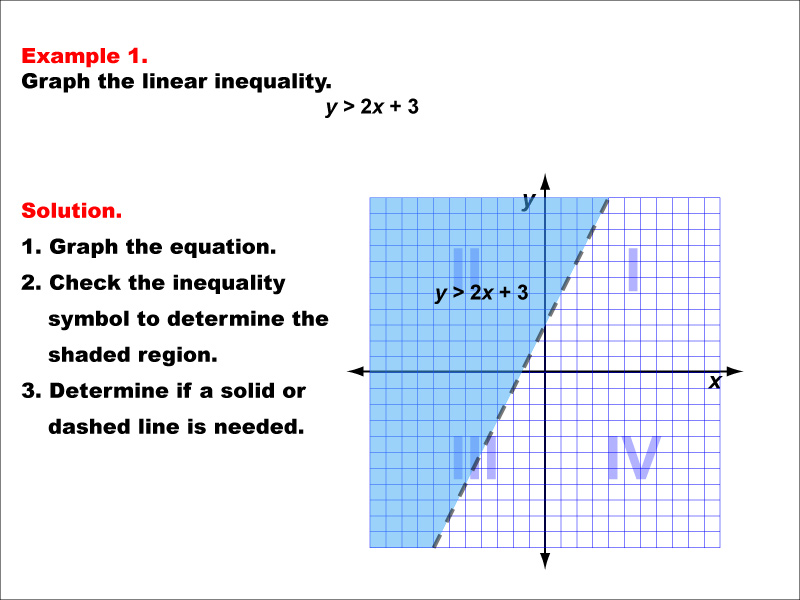
Display Title
Math Example--Inequalities-- Linear Inequalities: Example 1
Display Title
Math Example--Inequalities-- Linear Inequalities: Example 1

Topic
Inequalities
Description
This example demonstrates how to graph the linear inequality y > 2x + 3. The graph shows a dashed line representing the equation y = 2x + 3, with the region above the line shaded to indicate where the inequality holds true. The use of a dashed line signifies that points on the line itself are not included in the solution set.
Linear inequalities are an important topic in algebra, extending the concept of linear equations to include regions of the coordinate plane rather than just single lines. This collection of examples helps teach this topic by providing visual representations of various inequalities, allowing students to see how different inequality symbols and equations translate into graphical form.
Seeing multiple worked-out examples is crucial for students to fully understand the concept of linear inequalities. Each example in this collection showcases a different type of inequality, helping students recognize patterns and develop a comprehensive understanding of how to graph and interpret these mathematical relationships.
Teacher's Script: Today, we're going to explore graphing linear inequalities. Let's start with y > 2x + 3. Notice how we first graph the line y = 2x + 3, then shade the region above it. The dashed line tells us that points on the line aren't included in our solution. Can you explain why we shade above the line for this inequality?
For a complete collection of math examples related to Inequalities click on this link: Math Examples: Inequalities Collection.
| Common Core Standards | CCSS.MATH.CONTENT.6.EE.B.5, CCSS.MATH.CONTENT.7.EE.B.4.B, CCSS.MATH.CONTENT.HSA.REI.D.12 |
|---|---|
| Grade Range | 6 - 10 |
| Curriculum Nodes |
Algebra • Expressions, Equations, and Inequalities • Inequalities |
| Copyright Year | 2013 |
| Keywords | linear equations, inequalities |